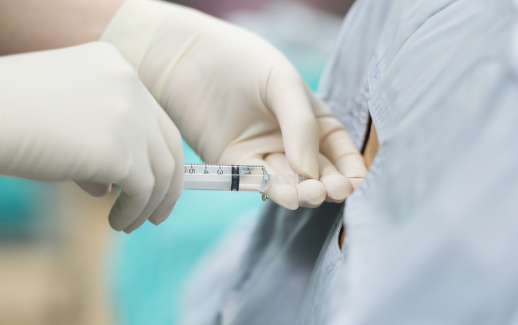Dr. Jordan Sudberg Explains the Most Effective Way to Understand the DiscSeel Procedure
Chronic back pain is one of the most common and debilitating conditions affecting millions worldwide. Traditional treatments often involve medications, physical therapy, or invasive surgeries, which may not always provide lasting relief. Recently, an innovative procedure called DiscSeel has been gaining attention as a promising alternative for patients suffering from degenerative disc disease and other spinal conditions.
To help patients and caregivers better understand this cutting-edge treatment, Dr. Jordan Sudberg, a renowned pain management specialist, shares his insights on the DiscSeel procedure—how it works, who it’s for, and what to expect.
What Is the DiscSeel Procedure?
DiscSeel is a minimally invasive, non-surgical treatment designed to repair damaged spinal discs—the cushions between the vertebrae that absorb shock and allow flexibility. The procedure uses a biologic injection, primarily containing platelet-rich plasma (PRP) combined with other healing agents, to stimulate the body’s natural repair mechanisms inside the disc.
Dr. Sudberg explains, “The DiscSeel procedure targets the root cause of disc degeneration, which traditional treatments often overlook. Instead of just managing pain symptoms, it aims to promote actual healing of the disc tissue.”
This approach is revolutionary because spinal discs have historically been considered poorly regenerative due to their limited blood supply.
How Does DiscSeel Work?
The procedure involves injecting the regenerative solution directly into the damaged disc under image guidance, usually with fluoroscopy (live X-ray).
Here’s a step-by-step overview as described by Dr. Sudberg:
- Patient Evaluation: Prior to the procedure, a thorough clinical assessment and imaging studies such as MRI confirm the disc’s condition.
- Preparation: The patient lies prone (face down) on the procedure table. Local anesthesia is administered to numb the area.
- Injection: Using real-time imaging, the physician carefully inserts a needle into the center of the damaged disc.
- Biologic Delivery: The PRP and other healing components are injected, which help seal tears in the disc’s outer layer (annulus fibrosus) and stimulate regeneration.
- Recovery: The entire procedure takes about 30–60 minutes, typically performed on an outpatient basis.
Who Is a Good Candidate for DiscSeel?
Dr. Jordan Sudberg notes that not all patients with back pain are candidates for this treatment. Ideal candidates usually have:
- Degenerative disc disease confirmed by imaging
- Discogenic pain—pain originating from the discs themselves
- Tears or fissures in the annulus fibrosus (outer disc layer)
- Pain refractory to conservative treatments like medication or physical therapy
- No significant spinal instability or nerve compression requiring surgery
“DiscSeel is best suited for patients who want to avoid or delay spinal surgery,” Sudberg emphasizes. “It offers a less invasive option with the potential for long-term relief.”
What Are the Benefits of DiscSeel?
According to Dr. Sudberg, DiscSeel offers several advantages compared to traditional surgical and non-surgical treatments:
- Minimally invasive: No large incisions or removal of bone or tissue.
- Outpatient procedure: Usually done in a clinic or surgery center, allowing rapid recovery.
- Stimulates healing: Unlike painkillers or steroids that mask symptoms, DiscSeel promotes biological repair.
- Reduced risk of complications: Lower infection risk compared to surgery.
- Improved function: Many patients report increased mobility and reduced pain over time.
While results vary, Dr. Sudberg has seen promising outcomes in patients who adhere to post-procedure rehabilitation.
What Can Patients Expect During Recovery?
Recovery from DiscSeel is generally faster than traditional spinal surgery. Dr. Sudberg outlines typical recovery milestones:
- Immediately after: Mild soreness or discomfort at the injection site is normal.
- First week: Patients are encouraged to rest but gradually resume light activities.
- 4 to 6 weeks: Physical therapy often begins to strengthen supporting muscles and improve flexibility.
- 3 months and beyond: Many patients notice significant pain reduction and improved quality of life.
“Disc regeneration is a gradual process,” Sudberg notes. “Patients should have realistic expectations and follow their doctor’s rehabilitation plan for the best outcome.”
Are There Risks or Side Effects?
As with any medical procedure, DiscSeel carries some risks, though they tend to be minimal. Potential complications include:
- Infection at the injection site
- Bleeding or bruising
- Temporary increase in pain after injection
- Allergic reactions to biologic components (rare)
Dr. Sudberg stresses that careful patient selection and sterile technique are key to minimizing risks.
How Does DiscSeel Compare to Other Treatments?
Many patients ask how DiscSeel stacks up against spinal fusion or traditional discectomy surgeries.
Dr. Sudberg explains:
- Spinal Fusion: Involves permanently joining two or more vertebrae, which can relieve pain but reduces spinal flexibility and has a longer recovery time.
- Discectomy: Removes part of a damaged disc to relieve nerve pressure but does not repair the disc itself.
“DiscSeel represents a middle ground—less invasive than surgery but more proactive than conservative care alone,” Sudberg says. “It’s not a cure-all but can be a valuable option in the right patient.”
How Can Patients Learn More About DiscSeel?
Education is critical. Dr. Jordan Sudberg recommends patients:
- Research reputable sources and ask questions during consultations
- Understand that DiscSeel is still relatively new and ongoing studies continue to evaluate long-term effectiveness
- Consult with a board-certified pain management specialist experienced in regenerative spine treatments
“Don’t hesitate to seek a second opinion,” he advises. “A thorough discussion about risks, benefits, and alternatives ensures patients make informed decisions.”
Final Thoughts from Dr. Jordan Sudberg
“Chronic back pain can drastically impact daily life and mental well-being,” reflects Dr. Jordan Sudberg. “The DiscSeel procedure is an exciting advancement that harnesses the body’s own healing power to address disc-related pain.”
While not appropriate for everyone, it offers a promising option for patients seeking alternatives to surgery or long-term medication.
“Ultimately, successful pain management requires a personalized approach,” Sudberg concludes. “DiscSeel is one of many tools we can use to help patients regain function and live more comfortably.”

